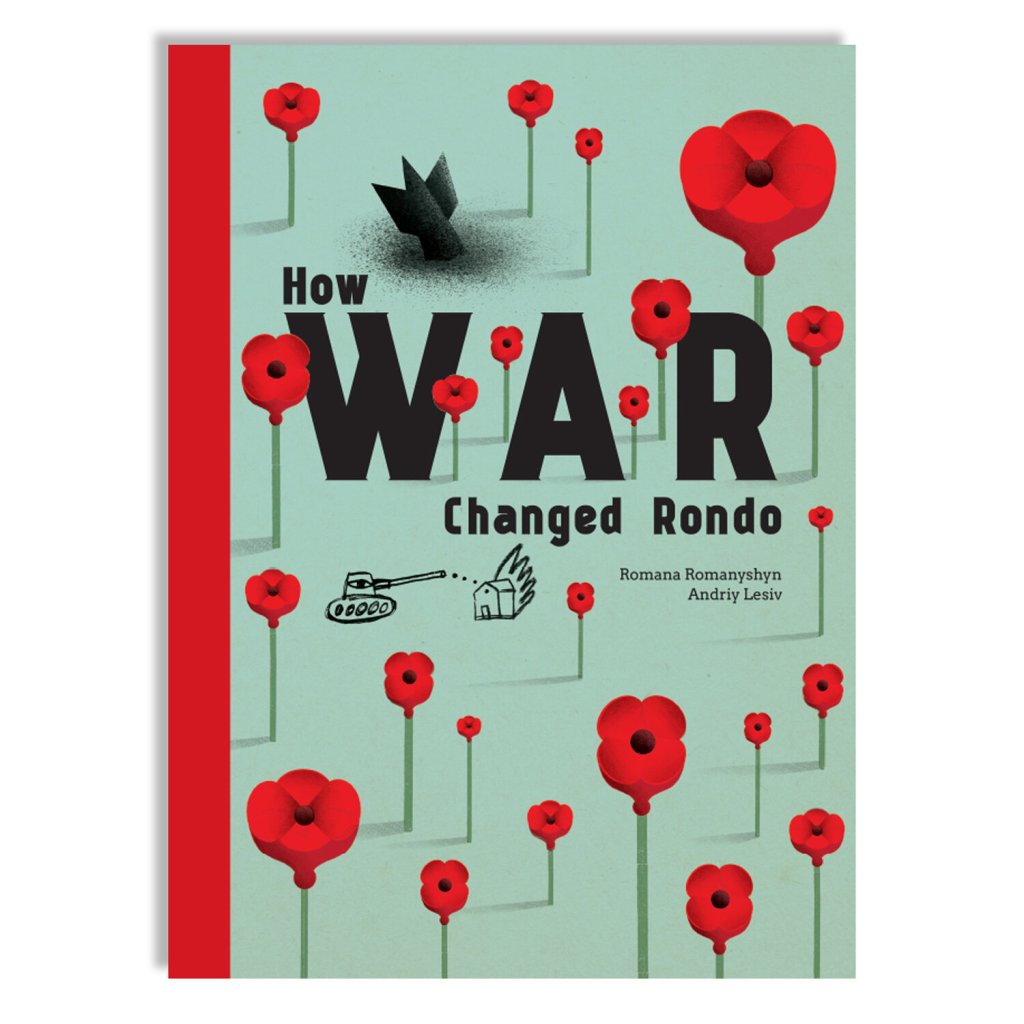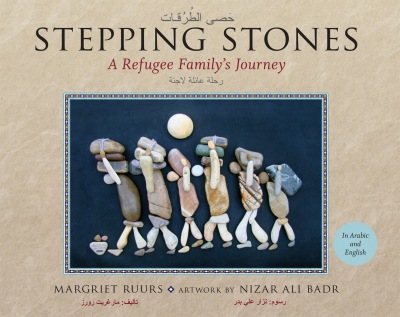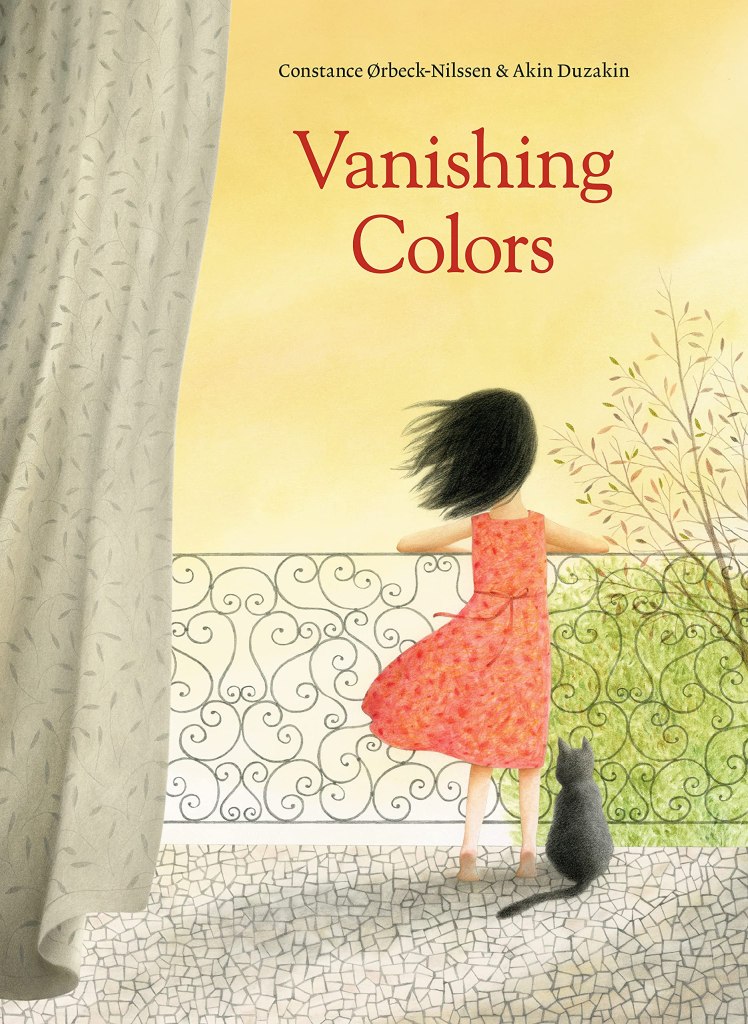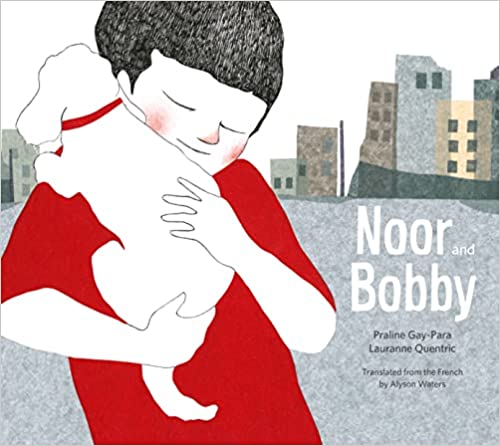The large majority of picture books focus on ‘kid-friendly’ themes – friendship, school, love, nature, holidays. It makes sense. They are perfect for bedtime snuggles or fun read-alouds. But what about the more difficult issues? The ones that we wish kids didn’t have to know about?
The sad truth is, kids all over the world face horrendous situations. And a good book can help acknowledge this – not only for the kids (and adults) in these situations but also for the rest of us. They help give us insight and empathy.
As I’ve been reading translated picture books, I’ve come to appreciate how books from other countries take on these challenging topics.

How War Changed Rondo (Enchanted Lion, 2021) is a gorgeous picture book written and illustrated by Romana Romanyshin and her husband Andriy Lesiv and translated from the Ukrainian by Oksana Lushchevska. The couple wrote the book after the war in Ukraine in 2013 and the annexation of Crimea in 2014. In the book, the town of Rondo is portrayed as a place of greenhouse concerts and singing flowers. The three main characters, a light bulb, a fuchsia balloon dog, and an origami paper bird, are whimsical and artsy, and the first third of the book shares the charm of their everyday life and hobbies – bicycle riding, treasure hunting, and traveling. They are also vulnerable – as is their town Rondo. The enemy in this book is a dark puppet that rains down missiles that burn and ravage, and the second part of the book slows down to show how war destroys Rondo. “War has no heart.”
In the last third of the book, the friends stumble on a way to attack war through light. And we are left with optimism, hope, and resilience – necessary not only for a successful picture book ending but also, I’d add, for humanity. But no one is unscathed. The paper is singed; the glass is cracked; the balloon has a puncture; the multi-hued flowers are now red poppies. It is victory nonetheless.
It’s a timely book unfortunately. And while the conflict is ongoing, the publisher, Enchanted Lion, is donating proceeds from the book purchased on their website to UNICEF’s efforts in Ukraine.
How War Changed Rondo ends with the end of the war, but for many families war means fleeing to find safety. Here again, bilingual and translated picture books tell some of those stories.

Canadian author Margriet Ruurs saw an image of a refugee family made out of stones on Facebook. The emotion behind this artwork captured her and sent her on a journey to find the Syrian artist. After an extensive search, she found Nizar Ali Badr, and proposed collaborating with him on a picture book. The result is an Arabic English bilingual book, translated by Falah Raheem and published by Orca Books, called Stepping Stones: A Refugee Family’s Journey. All of the pictures, from the crowing rooster to the fleeing family carrying both kids and goods, are made entirely of small colored stones. It’s hard to imagine how much anguish, grief, and hope can be portrayed in a collection of stones. Until you see this book. I suppose it’s even harder to imagine being a refugee and leaving your home and all you love to begin a treacherous journey. This book helps with imagining that, too.

Vanishing Colors (Eerdmans, 2019) was written by Constance Ørbeck-Nilssen, illustrated by Akin Duzakin, and translated from the Norwegian by Kari Dickson. It, too, is the story of being a refugee in flight. The book opens as a mother and daughter take shelter in a war-torn city. The darkness looms. A large bird flies in to provide comfort to the girl and help her remember the good times. The memories of dances, a market, and her father come to life in brightly colored illustrations. The memories and the bird’s advice to “Stay together and help each other” give her courage to carry on despite the dark sky. Although she doesn’t have wings to take flight like the bird, she waits for dawn and, holding her mother’s hand, looks to the rainbow in the sky with hope. Like the other books above, it’s not a ‘happily ever after’ story. The girl wonders if she’ll ever see her father again. She admits she’s scared. But she goes on regardless.

War is never mentioned in Noor and Bobby (Restless Books, October 2022) by Praline Gay-Prara, illustrated by Lauranne Quentric and translated from French by Alyson Waters. Young Noor adores the neighbor’s dog, Bobby. When the neighbor leaves, as all of the other neighbors have, and Bobby runs away, Noor goes after the dog. Noor discovers hidden spaces and other animals in a search that takes him through a war-torn city. This is a book that will prompt difficult questions. Why have all of the neighbors left and where have they gone? What is barbed wire? Why is the city topsy-turvy? Why was Bobby left behind? When will Noor and Bobby leave?
It would be ideal to live in a world where children don’t have to confront the terrors of war or the trauma of leaving home as a refugee. Until then, I’m grateful for the authors, illustrators, translators and publishers who share these stories and help us all understand the reality.
***
To read more about books translated from Ukrainian (and ones the team would love to see translated!), see our recent article here. We’ll have more on Ukrainian books coming soon, too.
For a new YA novel that also deals with difficult refugee issues, try Me, In Between by Julya Rabinowich translated by World Kid Lit editor, Claire Storey.
[…] other books about war ~ https://worldkidlit.wordpress.com/2022/05/02/picture-books-on-war/ […]
LikeLike